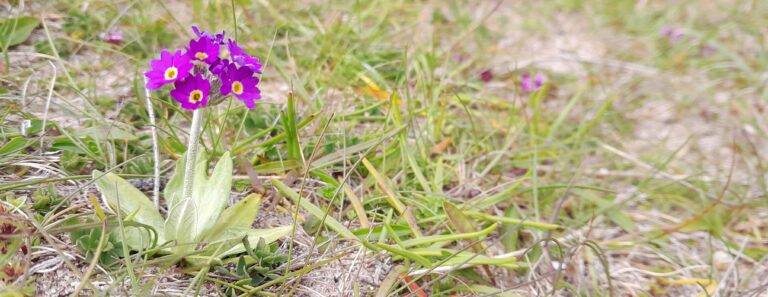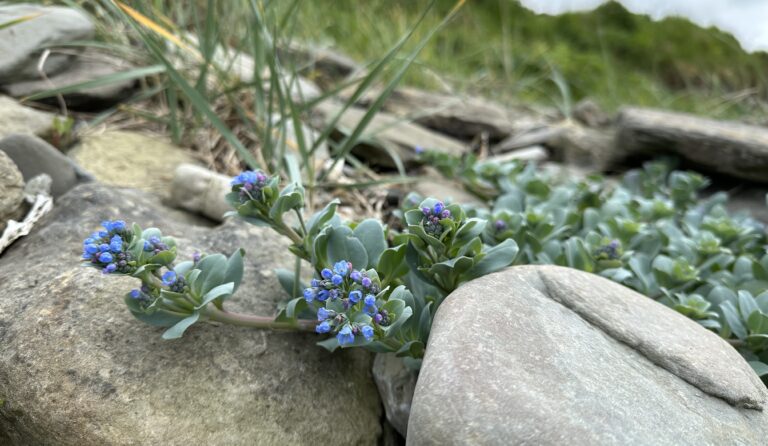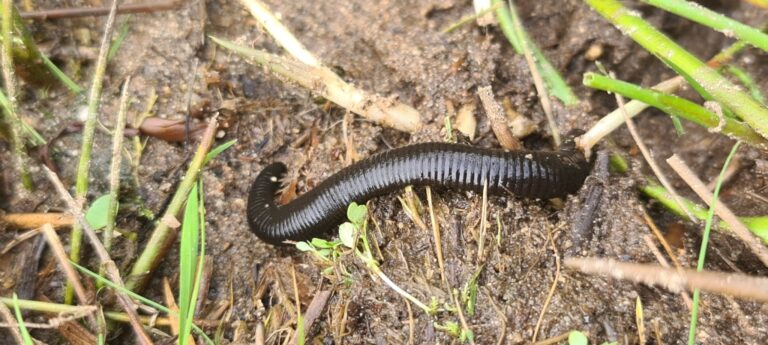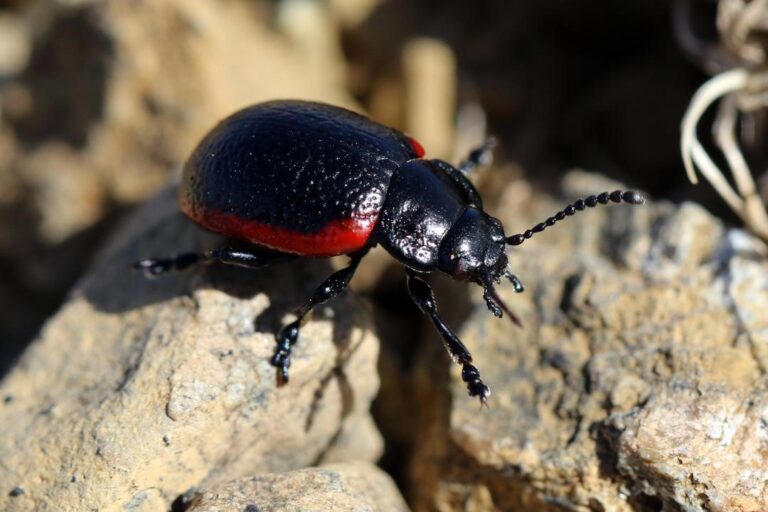By Aurore Whitworth
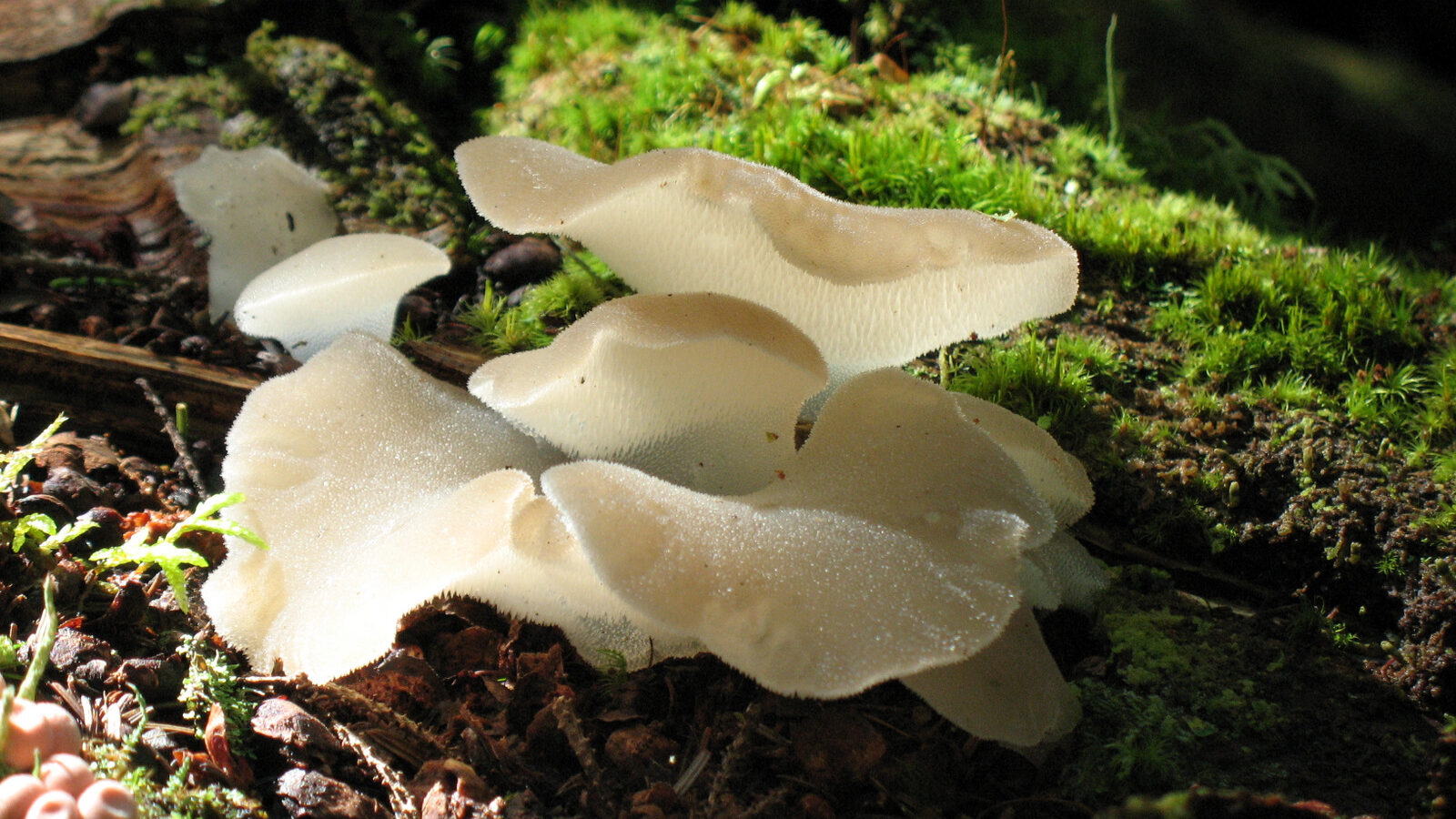
Pseudohydnum gelatinosum is a species of fungus in the order Auriculariales. It is usually referred to as the Toothed Jelly Fungus or Jelly Tooth because of its gelatinous consistency and tooth-like undersurface which is similar to other fungi species of the Hydnum family.
Despite a superficial similarity, this rubbery tooth fungus is not a close relative of either the Wood Hedgehog or the Bearded Tooth, which also occur in woodland habitats.
Where to see it
This fungus occurs on well-rotted coniferous wood, most commonly on spruce varieties but also pine. Felled trunks left to rot in shady, damp parts of the forest are likely to be hosts to this unusual species. In North Sutherland, I have seen it on a rotting conifer stump at Borgie Breco near Skerray. It would be great to find it in more places. If you find it please tell us by submitting a sighting here.
Seen only occasionally in Britain and Ireland, the Toothed Jelly Fungus occurs throughout Europe and is also recorded in many parts of North America. The species was thought to be cosmopolitan, but recent DNA evidence suggests that it is confined to Europe and Northern Asia, with superficially-similar (but distinct) taxa elsewhere. (In biology, a taxon -PL: taxa – is a group of one or more populations of an organism seen by taxonomists to be similar and form a unit, such as a species or genus.).
When to see it
Toothed Jelly Fungus can be seen at any time of the year but they are most commonly found from late summer to early winter.
Fungus Description
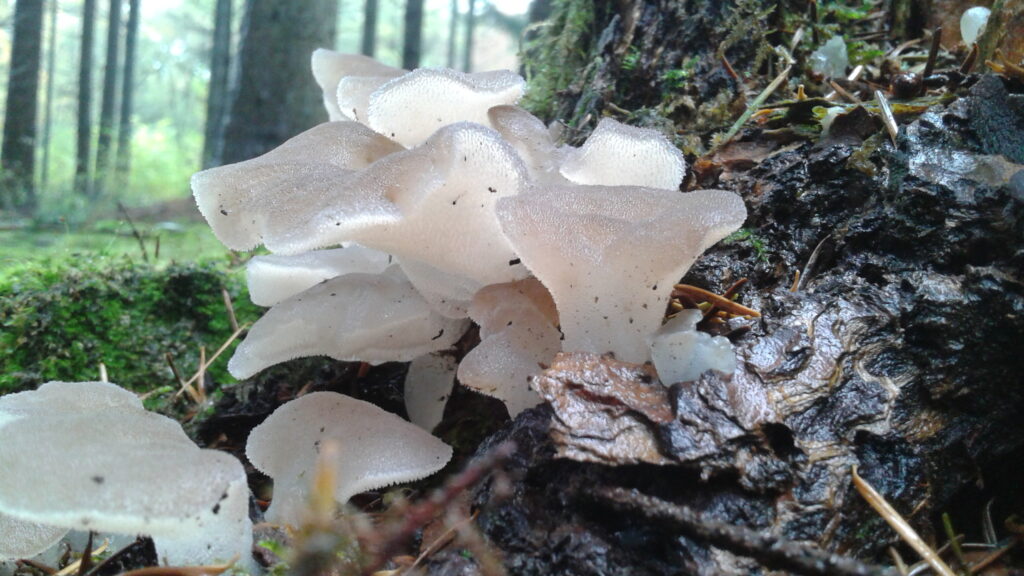
The cap or fruiting body (above ground ‘mushroom’ part of the fungus) ranges in size from 2 to 10cm across. Total height, including the stem, is up to 12cm, but more typically 6cm. The cap is translucent blue/grey turning brown with spines, mainly on the underside, but they can also appear anywhere on the fruiting body. The upper surface is very finely suede like.
The underside of the cap has blunt spines typically 3mm long. The spines are whitish, soft and can run down the stem. The stem is transluscent, white and commonly off-centre to the cap.
The spores are spherical, smooth, 5-6 x 5-5.5µm. The spore print is white.
The fungus is inamyloid (doesn’t contain starch) when tested with a special iodine solution used by fungus experts.
Fun fact: reports on edibility tend to vary!
References
https://www.first-nature.com/fungi/pseudohydnum-gelatinosum.php

